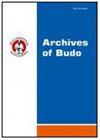波兰男子柔道国家队选手体型差异分析
IF 1.5
3区 医学
Q3 SPORT SCIENCES
引用次数: 27
摘要
人类学家经过半个多世纪的反复研究证明,身体构造是区分运动员和不进行系统体育训练的人的要素之一。然而,在运动员群体中,人们处理的是两个累积因素——被选中从事某项运动的人的特征(因此具有最大的倾向性)和训练的结果。这项研究的目的是将国家队柔道选手的身体构造特征与不从事专业运动的相同人群进行比较。材料与方法:研究对象为波兰男子柔道国家队选手(n=14)。选手年龄20-30岁(x=23岁),体重63 - 160公斤(x=93.8公斤),身高166-197厘米(x=179.3厘米),训练经验13±4.2年。参照组由华沙技术大学(波兰)的学生组成。测量了18个基本躯体特征。计算细瘦指数、Rohrer指数、BMI指数和Manouvrier指数。测定体密度、体脂、活动组织、体型总体轮廓和体型内部比例。结果:体重类别(随着体重的增加,细瘦特征明显下降)是决定柔道选手形态分化的重要因素。内部分析因素特征的比例表明,所有重量类别的竞争者都具有前臂肌肉特别强壮和小腿肌肉薄弱的特点。结论:选择合适的战斗技术(投掷,握力,假动作和他们的组合),以身体构造和柔道选手个性的其他组成部分仍然是一个悬而未决的问题。这些问题必须由教练针对个别的选手来解决。本文章由计算机程序翻译,如有差异,请以英文原文为准。
Differentiation of the body build in judo competitors of the men’s Polish national team
Background Anthropologists’ research repeated for over half a century now prove that the body build constitutes one of the elements differentiating sportsmen from persons not carrying out a systematic physical training. However, in the population of sportsmen one deals with the accumulation two factors – features of persons selected to practise a particular sport (thus with the greatest predispositions) and the results of training. The aim of the study was to properties of the body build among judo competitors of the national team compared to persons of the same population not practising professional sport. Material & Methods: The study involved competitors from the Polish national team in men’s judo (n=14). Competitors’ age 20–30 (x=23 years), body mass 63 kg to 160 kg (x=93.8 kg), body height 166–197 cm (x=179.3 cm), training experience 13±4.2 years. The reference group was made up of students of Warsaw Technical University (Poland). Eighteen basic somatic features were measured. Slenderness, Rohrer’s, BMI, and Manouvrier’s indices were calculated. Body density, complete body fat, active tissue, overall profile of the body build and internal proportions of the body build were determined. Results: Weight categories (with the increase in body mass, a distinct decrease in slenderness features takes place) are an important factor determining morphological differentiation of judo competitors. Proportions of features of factors analysed internally show that competitors of all weight categories are characterised by particularly strong muscles of the forearm and weak ones of the shank. Conclusions: A selection of an appropriate technique of fight (throws, grips, feints and their combinations) to the body build and other components of the judo competitor’s personality still remains an open issue. These problems must be tackled by coaches in reference to particular competitors individually.
求助全文
通过发布文献求助,成功后即可免费获取论文全文。
去求助
来源期刊

Archives of Budo
SPORT SCIENCES-
CiteScore
2.80
自引率
47.60%
发文量
0
审稿时长
>12 weeks
期刊介绍:
Archives of Budo is an international peer reviewed journal publishing articles on various aspects of the sports sciences covering education and research in martial arts and combat sports, and related areas like biomechanics, kinesiology, medicine, psychology, sociology, technologies of sports equipment, research in training, selection, performance, survival, and other interdisciplinary perspectives.
Archives of Budo editors endorse the principles embodied in the Helsinki Declaration and expect that all research involving humans has been performed in accordance with these principles. All human studies must have been approved by the investigator''s Institutional Review Board. A copy of the relevant documentation should be included with the manuscript. Furthermore Archives of Budo follows the ICMJE''s Recommendations for the Conduct, Reporting, Editing and Publication of Scholarly Work in Medical Journals.
Archives of Budo provides free, immediate and permanent online access to the full text of all articles distributed under the terms of the Creative Commons Attribution Non-commercial License http://creativecommons.org/licenses/by-nc/4.0), which permits use, distribution, and reproduction in any medium, provided the original work is properly cited, the use is non-commercial and is otherwise in compliance with the license.
 求助内容:
求助内容: 应助结果提醒方式:
应助结果提醒方式:


